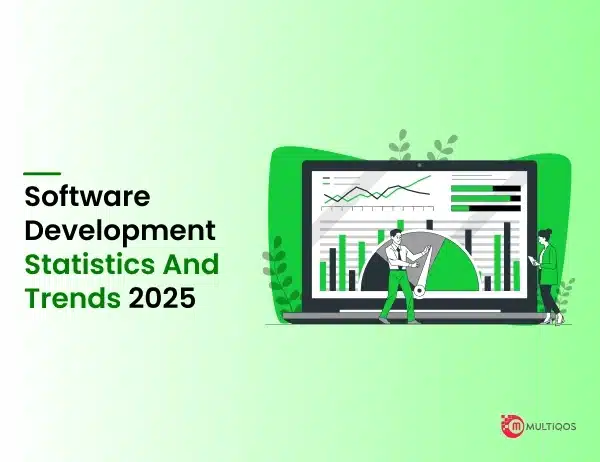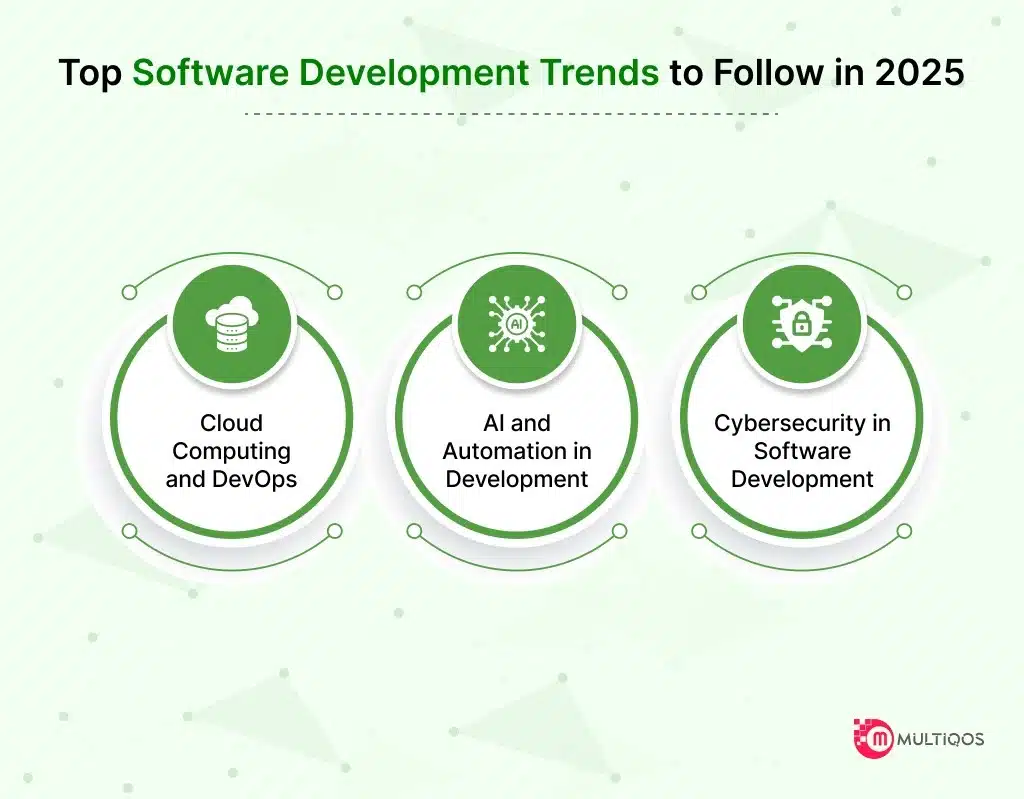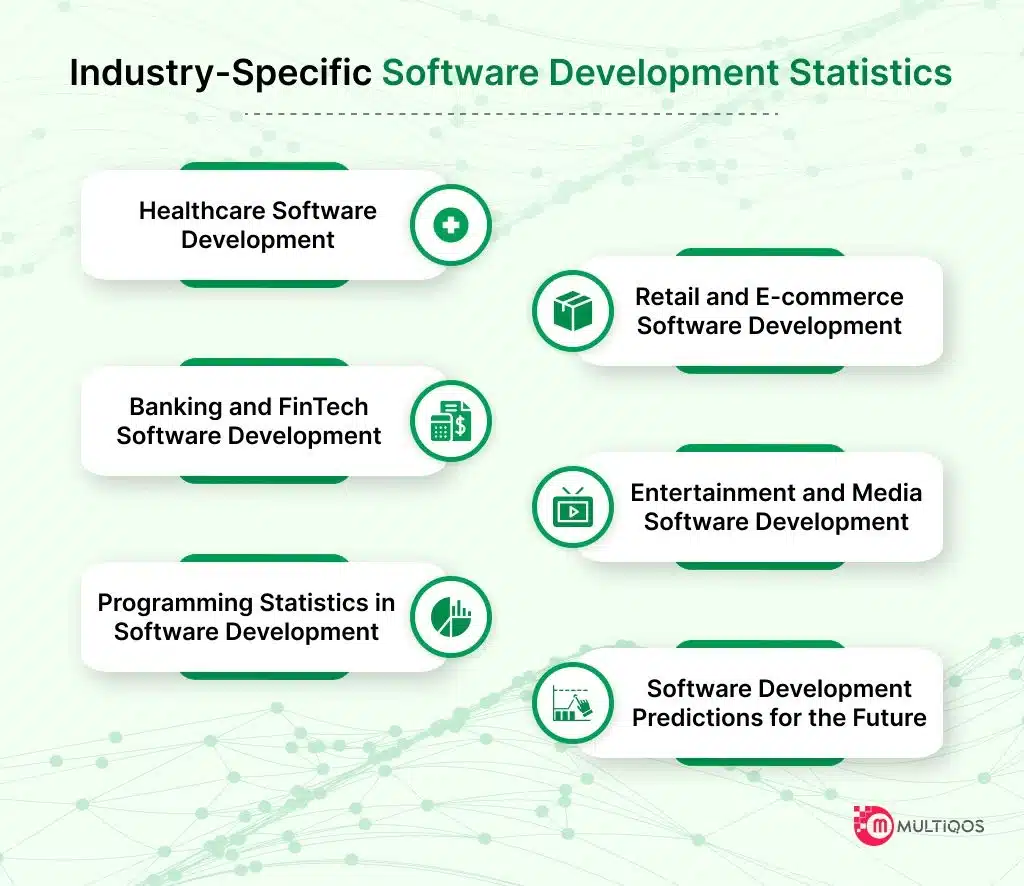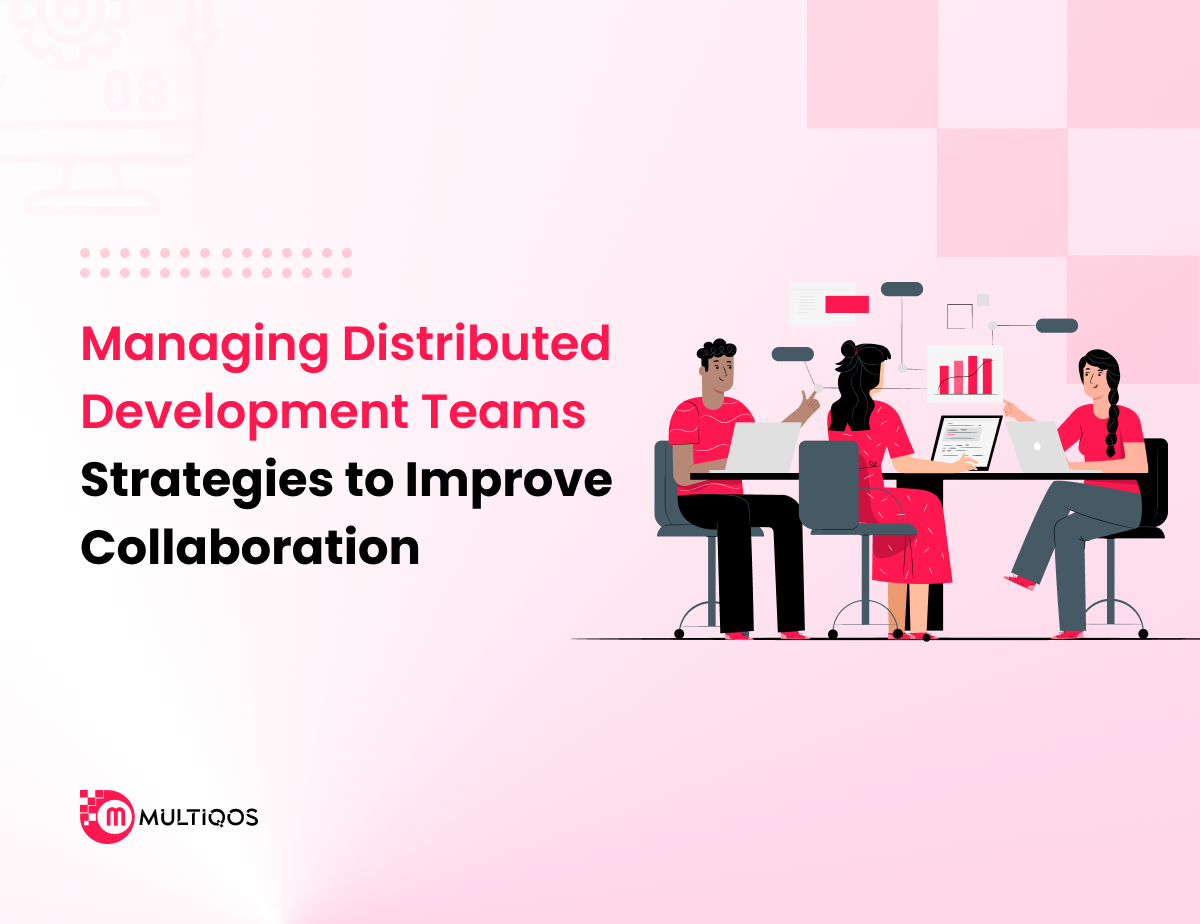Software Development Statistics You Should Know in 2025

Table of Content:
Summary
Software development in 2025 is evolving faster than ever, driven by AI, cloud adoption, blockchain, and the rising demand for custom solutions. The global market is on track to surpass $1 trillion, with remote development, enterprise apps, and automation reshaping how software is built and delivered.
This article highlights key software development statistics for 2025, covering market trends, popular programming languages, AI tools usage in coding, and more—giving you a clear view of where the industry is headed.
Introduction
Software development is advancing rapidly in 2025, driven by breakthroughs in AI, blockchain, cloud computing, and automation. The industry is becoming more dynamic, with emerging technologies reshaping how applications are built, tested, and deployed.
According to current global software development market trends, the industry is growing at over 8% annually and is expected to cross the $1 trillion mark by the end of 2025. These changes impact developers, tech companies, and businesses aiming to stay competitive in a fast-moving digital landscape.
This article presents the most relevant software development statistics for 2025, with insights into cloud technology adoption, custom software development growth, AI tools usage in coding, and more.
Key Software Development Statistics for 2025
The software development landscape in 2025 reflects strong momentum across multiple areas, from cloud adoption to AI integration. These updated statistics reveal how the industry is evolving and what’s shaping its future:
- 90% of companies now use cloud platforms like AWS, Azure, and Google Cloud for development, showing massive cloud technology adoption across all industries.
- The rise of AI tools usage in coding is evident—40% of developers now rely on platforms like GitHub Copilot for faster, smarter code generation, debugging, and optimization.
- The custom software development growth rate is projected at a 22.5% CAGR, with the market reaching $146.18 billion between 2025 and 2030 as businesses demand more tailored digital solutions.
- The software testing services market growth in Asia Pacific is accelerating, with an expected CAGR of 8% by 2026, as businesses focus more on performance and quality assurance.
- React Native usage has grown by 20%, while Swift is preferred by 56% of iOS developers, reflecting evolving trends in mobile app development.
- Blockchain integration in software applications is accelerating, with 30% of developers incorporating it—particularly in finance and healthcare to enhance security and transparency.
- Over 70% of teams now operate remotely or in hybrid settings, resulting in measurable gains in remote software development team productivity and access to global talent.
- Among the popular programming languages 2025 is set to highlight, JavaScript stands at the top with nearly 70% of developers relying on it for full-stack development.
- 50% of companies have adopted automation tools for development, leading to better code quality, faster deployment, and fewer bugs in production.
- The global shortage of full-time developers is projected to rise to 4 million by 2025, highlighting the increasing demand for software development talent.
- According to recent enterprise application development statistics, 84.7% of software projects are focused on enterprise apps, underscoring their critical role in business transformation.
- 53.6% of software projects are focused on business automation, underlining its importance in driving operational efficiency and growth.
Software Development Market Overview
The software development market continues to expand as digital transformation accelerates across industries. These figures highlight the current market focus and key trends in 2025:
- 85% of custom software development firms focus on enterprise application development, meeting complex business needs.
- 54% of companies are investing in software for business process automation, making it a core driver of enterprise software projects.
- 15.4% of businesses offer CRM software solutions, helping organizations strengthen customer relationships and retention.
- 72% of development teams work remotely or in hybrid setups, allowing access to global talent and boosting flexibility and productivity.
- 7.7% of top software providers specialize in educational software, helping schools and institutions digitize learning experiences.
Software Development Growth Metrics
The global software industry is scaling rapidly, driven by digital transformation, outsourcing, and rising enterprise demand. These stats reveal the scope of global software development market trends:
- The global software development market was valued at $659.01 billion in 2023 and is expected to reach $898 billion by 2029.
- From 2024 to 2029, the industry is forecasted to grow at a CAGR of 26.67%, reflecting strong global software development market momentum.
- Over 50% of Fortune companies outsource software projects to Indian IT firms, citing cost-efficiency and high-quality delivery.
- Countries like the USA, UK, Germany, South Korea, and Japan lead in adopting custom software development, making them global tech hubs.
- The enterprise software market is projected to hit $401.60 billion by 2029, growing at a 6.35% CAGR between 2025 and 2029.
- 60% of outsourcing services globally are related to software application development, driven by demand for scalable digital solutions.
Software Developer Demographic Statistics
Understanding developer demographics helps reveal shifts in the talent landscape, preferences, and working styles in 2025.
- Washington State has the highest-paid software engineers in the U.S., with an average salary of $105,406 and the highest concentration at 6.42%.
- Only 25% of developers hold formal degrees in computer science or related fields, showing a rise in self-taught and non-traditional tech talent.
- 46% of developers use macOS, 60% use Windows, and 45% prefer Unix/Linux for software development tasks.
- The United States holds 33% of the global tech market, making it the dominant force in global software development.
- Germany leads Europe in developer count, with 837,398 software engineers, reflecting its strong digital economy.
- Globally, 75% of developers are male, while 25% are female, highlighting a persistent gender gap in the tech industry.
- Work models vary: 41.41% work remotely, 42.18% are hybrid, and only 16.41% work fully onsite, showing the shift toward flexibility.
- The global developer population is expected to exceed 28.7 million in the coming years, driven by digital demand across all sectors.
Top Software Development Trends to Follow in 2025
Technology is redefining how software is created and delivered. These trends highlight the tools, platforms, and practices shaping the industry in 2025:
Cloud Computing and DevOps
- A recent survey reveals that 90% of businesses are prioritizing cloud technology adoption in software development, with AWS, Azure, and Google Cloud dominating the market share.
- The cloud computing market is projected to reach $832 billion by 2025, growing at an annual rate of 16%.
- AWS (32%), Azure (20%), and Google Cloud (9%) lead the cloud platform market for software projects.
- 75% of organizations use DevOps to improve collaboration between dev and ops teams, leading to shorter release cycles.
- 80% of teams have adopted CI/CD pipelines, reducing deployment time by 50% and increasing delivery frequency.
- DevOps-enabled companies experience 46% faster time-to-market and 60% lower failure rates in production.
AI and Automation in Development
- 50% of organizations use automated testing tools, reducing release cycles by 30% and bugs by 25%.
- Over 35% of teams integrate machine learning into apps for personalization, automation, and prediction.
- AI/ML-based coding tools reduce coding time by 25% by automating repetitive tasks using natural language prompts.
- 60% of companies that adopted AI and automation reported a 40% productivity boost and 30% fewer human errors.
Cybersecurity in Software Development
- 60% of development teams have implemented DevSecOps, integrating security earlier in the SDLC.
- Global cybersecurity spending is expected to hit $250 billion by 2025, driven by cloud expansion and increased threats.
- 45% of teams use shift-left security, embedding security checks from the early development stages.
- 70% of organizations are investing in cloud security solutions to protect against breaches and data loss.
- Over 50% of developers use encryption in their applications, emphasizing secure data handling as a development priority.
Industry-Specific Software Development Statistics
Different industries are adopting custom software solutions to improve efficiency, security, and user experience. These statistics highlight how software is reshaping key sectors:
Healthcare Software Development
- The global healthcare IT market was valued at $663 billion in 2023 and is projected to grow at a 15.8% CAGR through 2030.
- Over 50% of healthcare providers are developing or using software for patient care, chronic condition tracking, and medication adherence.
- The telemedicine market is growing at 23.5% annually, with most healthcare companies offering remote care services.
- 34% of data breaches occur in healthcare, prompting 60% of providers to increase spending on cybersecurity.
- 40% of healthcare providers are now using AI-powered tools for diagnostics, predictive analysis, and medical imaging.
Retail and E-commerce Software Development
- By 2025, 75% of retail sales will occur via mobile e-commerce, driving demand for mobile-first development strategies.
- Over 80% of e-commerce companies use AI and ML to improve product recommendations, boosting sales by up to 30%.
- 60% of retailers now use cloud platforms for CRM, inventory, and seamless multi-channel experiences.
- By 2025, 50% of global e-commerce purchases will be made using digital wallets, reflecting the mobile payment shift.
- 70% of retail companies use advanced supply chain software to improve inventory accuracy and reduce costs.
Banking and FinTech Software Development
- The FinTech market is expected to reach $305 billion by 2025, driven by digital banking, blockchain, and robo-advisors.
- The industry may hit $1.5 trillion by 2030, making FinTech one of the fastest-growing global software sectors.
- 30% of financial institutions use blockchain technology for transaction transparency, fraud prevention, and faster operations.
- Digital payment apps are projected to have over 4.8 billion global users by 2028, boosting demand for secure FinTech software.
- The mobile banking market is forecasted to hit $3.19 billion by 2031, growing at a 12.2% CAGR from $1.13 billion in 2022.
Entertainment and Media Software Development
- 40% of media companies are investing in AR/VR, with the market projected to reach $209 billion by 2025.
- 75% of streaming platforms use AI and analytics for personalized content recommendations and improved engagement.
- Due to piracy, 65% of media firms now implement cybersecurity tools to protect digital content and streaming services.
- The global streaming market is expected to hit $250 billion by 2025, powered by software platforms and media tech.
- Mobile gaming continues to rise with an expected 12% CAGR, and 80% of gamers now play on mobile devices.
Programming Statistics in Software Development
Programming languages, tools, and platforms are evolving rapidly. These stats show what technologies developers will be relying on in 2025:
- Python remains a top choice, used by 48.14% of developers in 2024 due to its versatility in AI, data science, and web development.
- Over 50% of developers still use HTML/CSS for front-end development, forming the foundational structure of modern websites.
- JavaScript is the most widely used programming language, adopted by 70% of developers in 2025 for full-stack development.
- GitHub now hosts 94 million developers and over 85.7 million new repositories, showing strong community and collaboration growth.
- Java is still heavily used by 40% of large enterprises for complex systems in finance, e-commerce, and legacy application support.
Software Development Predictions for the Future
The future of software development is being shaped by automation, emerging platforms, and entirely new computing paradigms. These predictions show what’s next:
- AI and ML will continue transforming custom software development with tools like GitHub Copilot, enabling faster, smarter coding through automation and natural language prompts.
- Low-code and no-code platforms are projected to reach $65 billion by 2027, freeing developers from simple tasks and empowering non-technical users to build apps efficiently.
- Quantum computing will begin influencing software development, especially in cybersecurity, data processing, and AI, unlocking solutions beyond the limits of classical systems.
- Remote development environments, AI-powered dev tools, and global talent access will redefine how teams collaborate, making development faster, cheaper, and more scalable.
- Security-first development will dominate, with DevSecOps and shift-left security becoming standard practices across teams to prevent breaches in increasingly cloud-native environments.
Conclusion
The software development landscape in 2025 is being reshaped by advancements in AI, cloud technology, blockchain, and custom solutions. These trends, backed by strong global market growth and evolving development practices, highlight the need for businesses to stay agile and forward-thinking in their approach to software.
To stay competitive and future-ready, it’s essential to hire software developers who are skilled in modern tools, methodologies, and technologies. With the right team in place, companies can turn tech trends into opportunities—building smarter, scalable, and secure solutions that meet the demands of a fast-evolving digital world.
Frequently Asked Questions
Key trends include AI tool usage in coding, cloud-native development, blockchain integration, low-code platforms, and the rise of enterprise application development across industries.
These statistics help businesses understand market direction, plan smarter tech investments, and align development strategies with evolving user and industry needs.
To stay ahead of the curve, companies need to hire software developers who are proficient in modern tools, remote collaboration, and scalable technologies that meet today’s digital demands.
AI and automation streamline coding, testing, and deployment—reducing development time, improving code quality, and freeing developers to focus on strategic, high-value tasks.
Get In Touch








